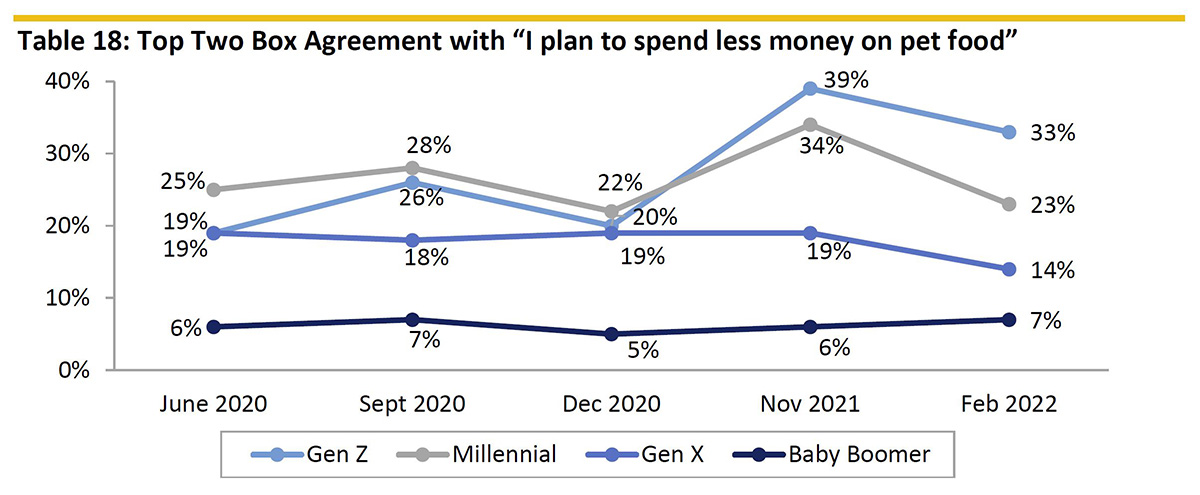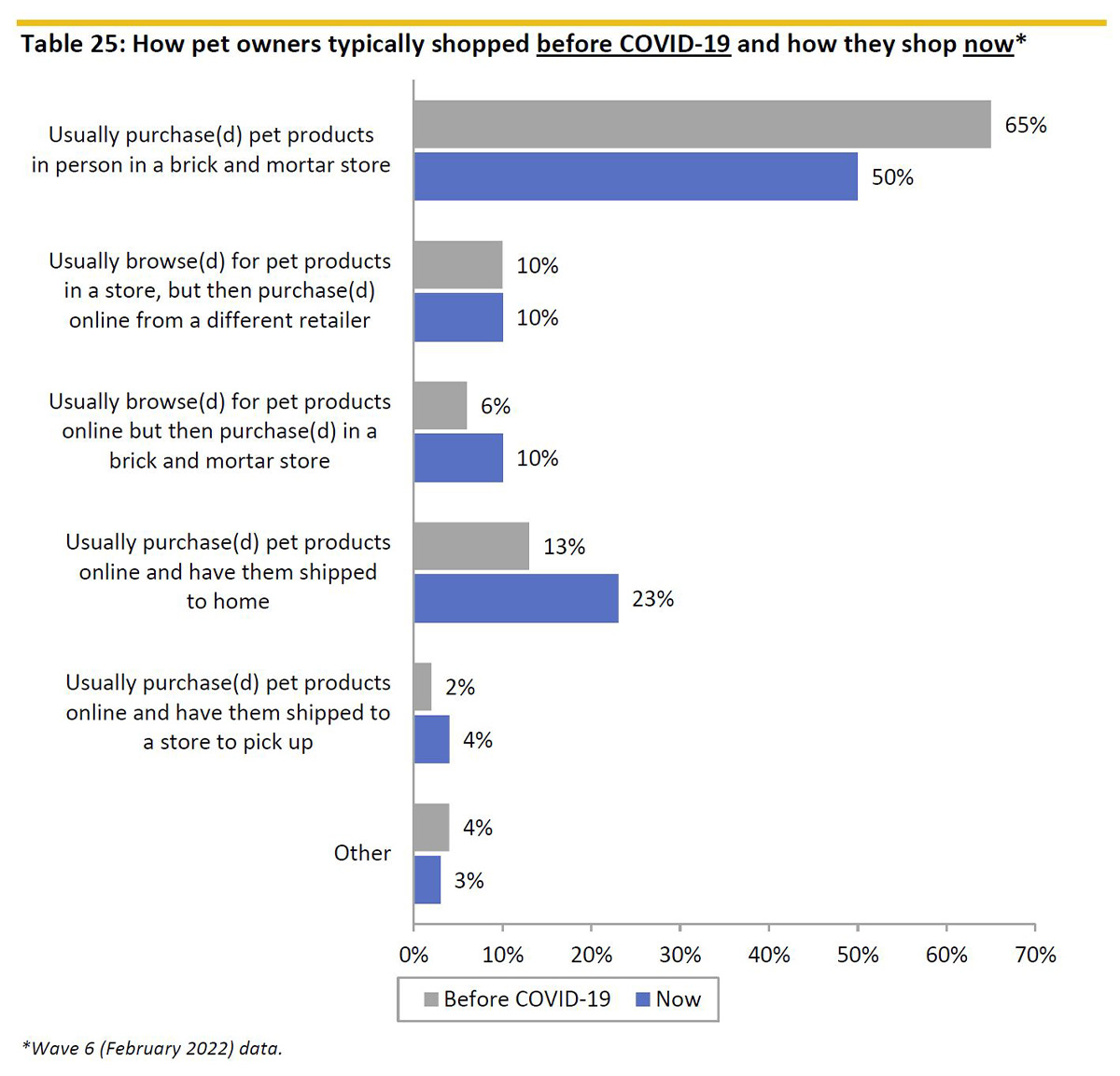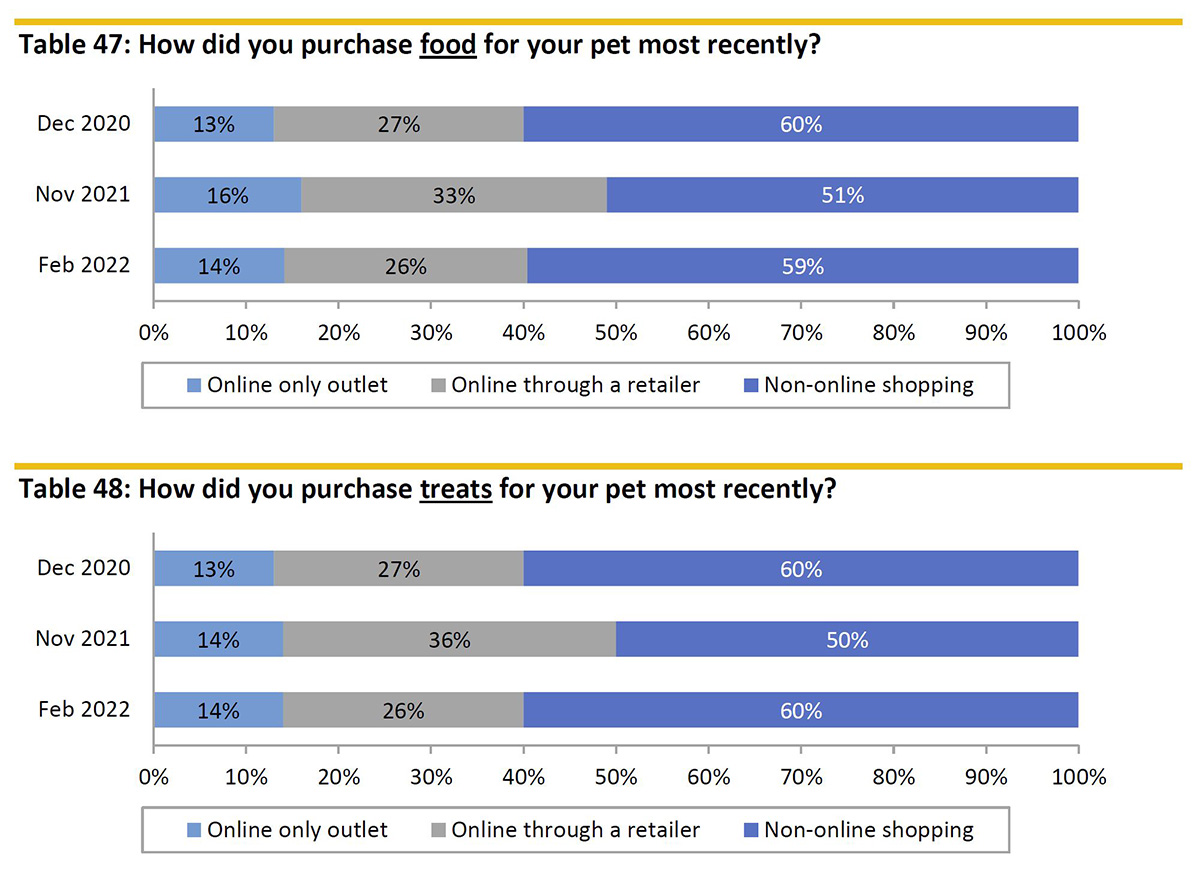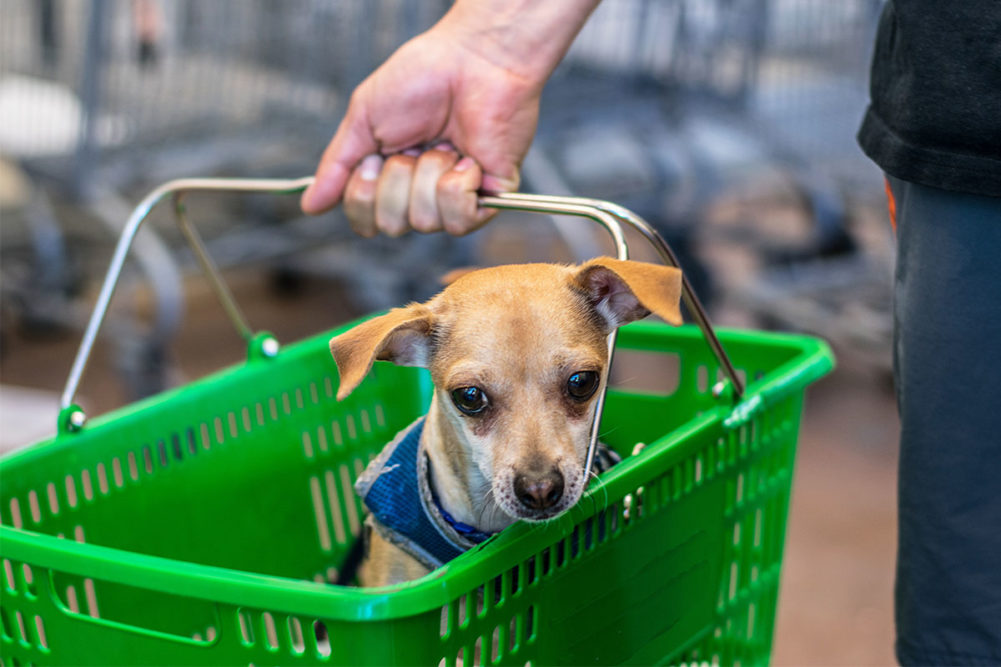STAMFORD, CONN. — With the Omicron variant in the rear view and overall COVID-19 restrictions loosening across the United States, the American Pet Products Association (APPA) is reporting a return to pre-COVID purchasing behaviors and economic sentiments among American pet owners.
The latest iteration of APPA’s “COVID-19 Pulse Study: Pet Ownership During the Pandemic, Vol. 6” was conducted online in February 2022 and included data from 2,052 pet owners and non-pet owners across the United States.
Overall, survey respondents reported feeling slightly less unsettled or worried about COVID-19 and the impacts it may continue to have on their lives. Half (50%) of respondents reported being “very worried about COVID-19,” down from 54% in November 2021, but 56% believe the economy will worsen over the next year, up from 52% in November 2021.
Brand loyalty and the importance of a pet’s diet remain largely unchanged from November 2021 to February 2022, indicating pet owners will continue to stay the course with their usual pet food and product purchases despite economic or supply chain factors. Fewer pet owners (17% to 18%) said they plan to spend less money on pet food due to their economic situation, compared to 23% in November 2021.
 Source: APPA
Source: APPA
Concerns about the supply chain and the labor market also seems to be declining, with 34% of pet owners worried they won’t be able to get their pet care products in February 2022, down from 39% in November 2021. Most pet owners (76%) were able to find the specific pet food item they were looking for at the first store they checked, up from 72% in November 2021, while 11% had to go to a different store to find the item. Only 7% reported the item was out of stock and they did not purchase it. This was similar for treats, with 65% of pet owners finding the item and purchasing it at the first store, 10% going to a different store to find it, and 5% reporting the item was out of stock.
In-store pet product shopping is down overall, following an acceleration of e-commerce and omnichannel options. APPA asked survey respondents to share how they typically shopped before COVID versus how they shop now, which revealed that of the 65% of pet owners who shopped in-person at a brick-and-mortar store, only 50% of them continue to do that today. While 13% of pet owners shopped online and had items shipped directly to their home before the pandemic, that number has since increased to 23%. Less dramatic shifts were seen for omnichannel purchases pre- and post-COVID, including browsing in-store and ordering online, browsing online and ordering in-store, and order online and pick up in-store options.
 Source: APPA
Source: APPA
Going forward, however, more pet owners (57%) said they intend to return to in-person pet product shopping in February 2022, compared to 47% in November 2021. Fewer pet owners plan to continue ordering online and having products delivered to their homes, with 20% indicating in February 2022 they will continue this practice compared to 22% in November 2021. Again, less dramatic shifts were seen for omnichannel purchases.
In February 2022, 69% of pet owners said their most recent pet food purchase was made in-person at a brick-and-mortar store, white 16% opted to purchase online and have it shipped directly to the home. This indicates a slight shift away from online-only purchasing and toward in-person shopping compared to November 2021, when 60% of pet owners made their most recent pet food purchase in-person and 19% ordered online with direct delivery.
Similarly with treats, 70% of pet owners made their most recent pet treat purchase in-person, while 15% ordered online with direct delivery, compared to November 2021 when 58% of pet owners made their most recent treat purchase in-person and 21% shopped online and had the product delivered to the home.
 Source: APPA
Source: APPA
The split between in-store and online purchasing is more subtle for vitamins and supplements, with 52% of pet owners purchasing in-store and 25% of pet owners purchasing online with direct delivery, compared to 46% in-store and 29% online in November 2021.
Demographic data showed decreases in online-only pet product purchasing and increases for in-person shopping across nearly all generations, geographic regions and racial groups from November 2021 to February 2022.
In February 2022, 25% of Gen Z pet owners reported purchasing pet products through an online-only outlet, compared to 28% in November 2021, while 38% reported shopping in-store, up significantly from 13% in November 2021. Twenty-nine percent (29%) of Millennial pet owners shopped online in February 2022, down from 36% in November 2021, and 36% shopped in-store, up from 24% in November 2021. Gen X purchasing behaviors shifted slightly in February 2022, with 36% purchasing online, compared to 35% in November 2021, and 47% purchasing in-store, compared to 40% in November 2021. Roughly one-third (31%) of Baby Boomer pet owners purchased pet products online in February 2022, compared to 36% in November 2021, while the percentage of in-store shoppers remained unchanged at 48%.
More pet owners in the Northeast (35%), Midwest (48%), South (42%) and West (43%) United States purchased pet products in-person in February 2022 compared to November 2021. Online purchases were mostly flat for pet owners in the South and West from November 2021 to February 2022, but fewer pet owners in the Midwest and Northeast shopped online in February 2022 compared to November 2021.
According to the survey, Black and Hispanic pet owners prefer in-person pet product shopping, with 34% of Black pet owners and 40% of Hispanic pet owners shopping in-person in February 2022, compared to 10% and 20%, respectively in November 2021. The percentage of Black pet owners shopping for pet products online grew slightly from 24% in November 2021 to 26% in February 2022, but online shopping among Hispanic pet owners declined from 33% in November 2021 to 29% in February 2022.
Overall, 23% of pet owners chose discount stores or mass merchandisers for their most recent pet food purchase in February 2022, with 18% shopping at a pet superstore, 14% at a supermarket and 14% through an online-only outlet. For treats, 22% of pet owners shopped for pet treats most recently at discount stores or mass merchandisers, while 18% chose a pet superstore, 15% shopped at a supermarket and 14% shopped through an online-only outlet.
For pet vitamins and supplements, 19% of pet owners shopped at a pet superstore most recently, while 16% shopped through an online-only outlet, 13% purchased at a discount store or mass merchandiser, and 12% purchased the product through their veterinarian.
Read our summary of APPA’s previous COVID-19 Pulse Study from November 2021 here.
Keep up with the latest pet food trends on our Trends page.



